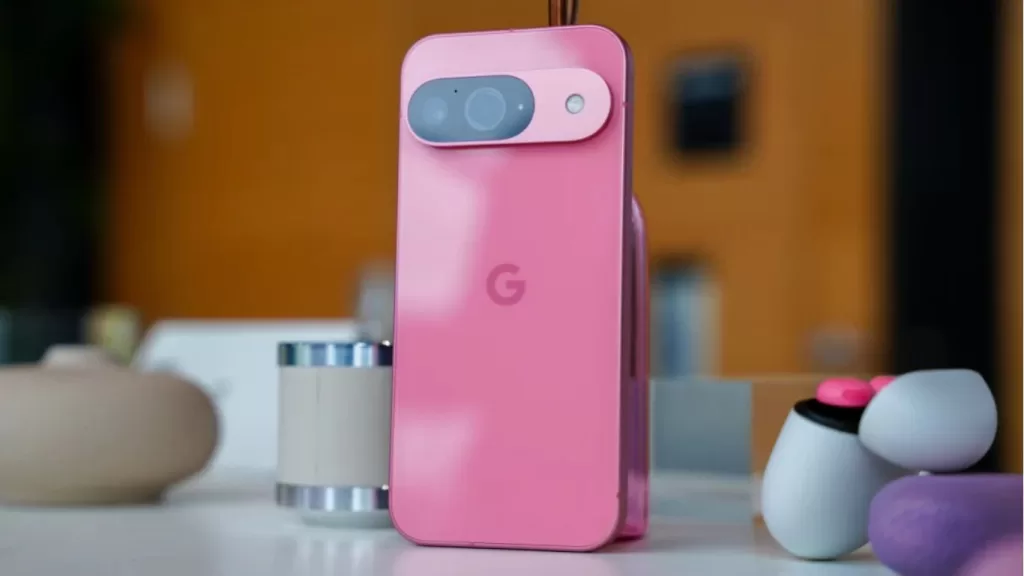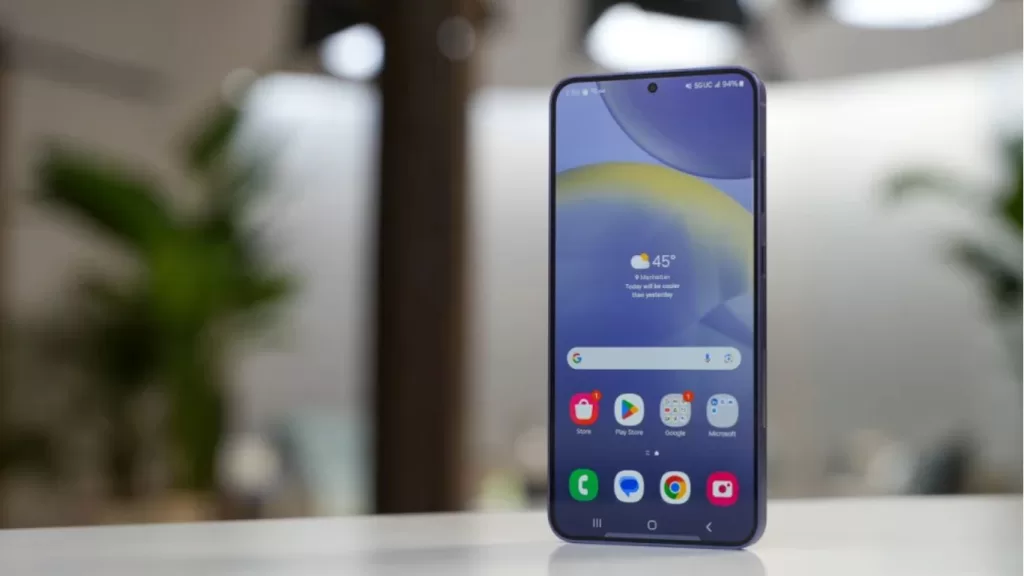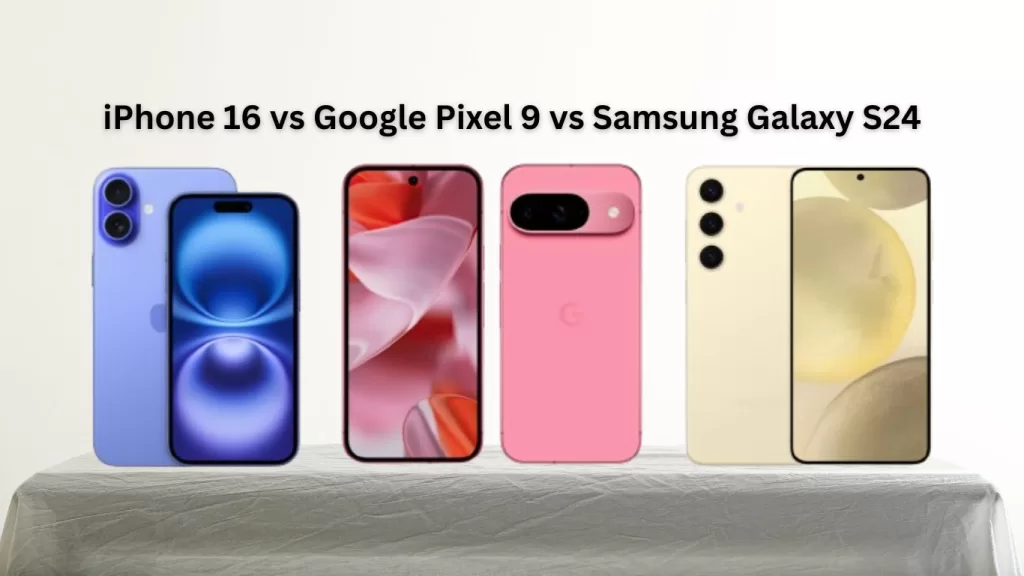AI Features have just been released the most recent high-end smartphones, and the competition between them is deadly. Apple’s iPhone 16, Samsung’s Galaxy S24, and Google’s Pixel 9 are the players that are currently at the top among the premium smartphones. Each of them has not only a strong point but also a weak one due to the ultra-modern technology they have recently developed.
Display Comparison
The Apple iPhone 16, the 6.1 inch Super Retina XDR OLED display with HDR10 and Dolby Vision and a peak brightness of 2,000 nits is the Graphic that represents the instances. On the contrary, the Galaxy S24 Android phone 6.2″ Dynamic LTPO AMOLED 2X display with a 120Hz refresh rate, dates HDR10+ and a peak brightness of 2600nits.
The Pixel 9 gives a 6.3″ OLED display with a 120Hz refresh rate, HDR10+, and a peak brightness of 2,700 nits. Both the Pixel 9 and the Galaxy S24 can Always-On Display a feature that has been in place for some time now, the majority of these devices have advanced AI Features which is the best way to make this change.

Processor and RAM
For example, an in-house A18 chipset with a hexa-core CPU and fiveprocessor GPU and 8GB of RAM are the main components of the iPhone 16; on the other end, the Galaxy S24 runs on an automatic eight-core processor. Exynos 2400 SoC. Xclipse 940 GPU.
12GB of RAM is the maximum RAM that the phone can support is the maximum RAM that the Xclipse 940 GPU can support. Tensor G4 is for the Pixel 9 with an octa-core CPU and a Mali-G715 MC7 GPU, together with 12GB of RAM. The development of advanced processors allows AI Features to be smoothly integrated.
Advanced AI Features Camera Showdown
In addition to a 48MP main camera, a 12MP ultrawide camera, and the Face Time camera that rollers a 12MP sensor, the iPhone 16 has one-way cameras. On the other hand, the Samsung Galaxy S24 features a 50MP main camera, a 10MP telephoto camera, and a 12MP wide camera.
The front camera is also a 12MP camera. Camera specifications differ and it is clear that each phone is special in its own way. Pixel’s front camera is decked with a 50MP main sensor and a 48MP ultrawide sensor for the rear camera, while its selfie camera uses the 10.5MP ultrawide sensor. The camera capabilities of all the devices are further enhanced with Advanced AI Features.

Battery Life and Charging
Tech and digital media are the preferred areas that have been given a great deal of emphasis by manufacturers. Apple has no official information on the capacity of the battery for this iPhone, however, it can charge at a rapid speed by 25W wired or 15W wireless.
The Samsung Galaxy S24 is with a 4000mAh battery that has both wired and wireless charging of 25W and 15W, respectively. Google Pixel runs a 4700mAh battery that is 27W wired and is supported in the range of 15W wireless fast charging. Advanced AI Features ensure an effective way of autonomy.

AI Features and Software
Apple’s iPhone 16 is the first device that uses Apple Intelligence features, which enhance the phone’s performance and user experience. Samsung launched spectral carriers that include AI capabilities on its flagship phones, meanwhile, Google was the first brand to bring AI Features to market last year with Pixel devices.
The three devices differ in AI Features capabilities, but they all are aimed at improving camera performance, battery life, and users’ experience. AI Features indeed are the cutting points in the latest mobile technologies.
Conclusion
The iPhone 16, Galaxy S24, and Pixel 9 are the most magnificent smartphones with their advantages and failures. The most important thing to consider for the best high-end smartphone is the display quality, the processing power, the camera capabilities, and the AI Features.
All of them are where we can encounter a perfect user experience, but the best choice is up to you as an individual quite naturally. AI Features integrated by the educational institution that is running the scholarship program are the distinctions of the case.

